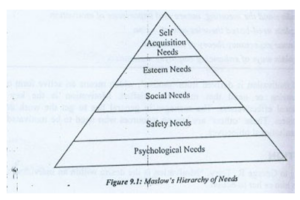NIOS Free Solved Assignment [TMA] 2022 – 2023
Psychology 328 Free Solved Assignment [TMA] 2022 – 23
Tutor Marked Assignment
Max. Marks: 20
In this article, you will get Psychology 328 Free Solved Assignment [TMA] 2022-23. You will solved assignment of other subjects in our page nios solved assignment 202-23.
Note:
(i) All questions are compulsory. The marks allotted for each question are given beside the questions.
(ii) Write your name, enrollment numbers, Al name, and subject on the first page of the answer sheet
1. Answer any one of the following questions about 40-60 words. 2
(a) There are a major psychological perspectives given in your SLM. After reading these perspectives, select one perspective that you find most applicable. Support your choice with appropriate reasons. (See Lesson-1)
Ans: Answer any one question
(b) Psychologists use a variety of tools to collect relevant data, such as-questionnaires, and Interview Schedules, psychometric tests, and projective tests. Explain how psychometric tests differ from projective tests. (See Lesson-2)
Ans: Psychometric Tests: As a learner of psychology it is essential to be familiar with intelligence tests, personality tests, aptitude tests, interest inventories and many other similar psychological tools. They provide measurement of individual differences.
Projective Tests/Techniques: This includes a variety of tasks which are unstructured or ambiguous. The performance of a person on these tasks cannot be used in any direct manner. The performance is viewed as projection of the psychological attribute under consideration.
2. Answer any one of the following questions in about 40-60 words. 2
(a) Humans possess different sense organs which help us collect information from the external world. Similarly, when you are eating any kind of food, which senses are working in the foreground? Explain. (See Lesson-4)
(b) One of your friend, Manyam, feels she has a good memory. She wants to test her memory. Suggest different tests of retention that you can use to measure memory. (See Lesson-7)
Ans: The measurement of memory is undertaken with the help of two types of measures i.e. explicit and implicit. The explicit measures require that a person must remember some given information that is stored in memory. The person makes deliberate efforts to recall the details of the previously experienced events or material. Thusa direct measure of memory is used. The implicit measure of memory is one in which a person has to perform some task in which no deliberate or intentional effort is made to retrieve from memory.
Explicit measures include recall and recognition.
Implicit measures include word completion and priming task.
3. Answer any one of the following questions in about 40-60 words: 2
(a) In your opinion, can our language affect our thought process? Justify your answers with suitable examples. (See Lesson-8)
Ans: Answer any one question
(b) Explain Spearman’s G factor theory using the following diagram: (See Lesson-15)

Ans: The g factor, where g stands for general intelligence, is a statistic used in psychometrics in an attempt to quantify the mental ability underlying results of various tests of cognitive ability. The existence of such an underlying g factor was postulated in 1904 by Charles Spearman.
Spearman proposed that we possess one general intelligence factor (g) and many specific factors (s) which are specific to particular abilities. The g factor runs across all types of abilities. It is expressed in the ability to understand abstract relations.
4. Answer any one of the following questions in about 100-150 words: 4
(a) There are multiple factors of intelligence. Identify and give example for each factor from your daily life. (See Lesson-15)
Ans: Answer any one question
(b) A psychologist says that they follow a humanistic perspective of psychology. What are the assumptions that can be formulated by the given information? Support your answer with reasons. (See Lesson-18)
Ans: These theories propose that within each individual is an active creative force, often called “self”. This force seeks expression. It develops and grows. This perspective, also known as the third force, emphasizes on human potential and characteristics like self-awareness and free will. It views human beings as innately good. The conscious and subjective perception of self is considered very important. Carl Rogers and Abraham Maslow are the main proponents of the humanistic perspective. Abraham Maslow proposed the idea of self-actualized people.
Maslow Abraham proposed his theory in the 1940s. This theory, popularly known as the Hierarchy of Needs assumes that people are motivated to satisfy five levels of needs: physiological, security, belongingness, esteem and self-actualization needs. The figure 9.1 shows Maslow’s hierarchy of needs

Maslow suggested that the five levels of needs are arranged in accordance with their importance, starting from the bottom of the hierarchy. An individual is motivated first and foremost to satisfy physiological needs. When these needs are satisfied, he is motivated and ‘moves up’ the hierarchy to satisfy security needs. This ‘moving up process continues until the individual reaches the self-actualization level.
a) Physiological needs: Physiological needs represent the basic issues of survival such as food, water and air. In organisational settings, most physiological needs are satisfied by adequate wages and by the work environment itself, which provides employees with rest rooms, adequate lighting, comfortable temperatures and ventilation.
b) Security or safety needs: Security or safety needs refer to the requirements for a secure physical and emotional environment. Examples include the desire for adequate housing and clothing, the need to be free from worry about money and job security and the desire for safe working conditions.
c) Social needs: Belonging or social needs are related to the, social aspect of human life. They include the need for love and affection and the need to be accepted by one’s peers.
d) Esteem needs: Esteem needs actually comprise of two different sets of needs:
i. The need for a positive self-image and self-respect.
ii. The need for recognition and respect from others.
e) Self-actualization needs: At the top of the hierarchy are those needs, which Maslow defines the self-actualization needs. These needs involve realizing one’s potential for continued: growth and individual development.
5. Answer any one of the following questions in about 100-150 words 4
(a) Discuss the four stages of group development. Try to identify at least two of these stages in your daily life groups. (See Lesson-21)
Ans: Bruce Tuckman identified four distinct phases of team development: forming, storming, norming, and performing.
1. Forming: At this point, the creation of a new group begins, with members meeting and getting to know one another through interactions. Individuals are interested and eager to learn more about the task’s scope and possible approaches. Individuals generally arrive with a desire to be accepted by others and to avoid controversy or conflict.
2. Storming: After the shaping stage, the individuals will begin to interact with one another in the context of the work at hand. At this point, there will be the most friction and competitiveness among the group members.
3. Norming: Once the roles of each team member, as well as their authority and responsibilities, have been clarified, the team members begin to settle into a group. Everyone here works together to achieve the goal and respects each other’s expertise and abilities.
4. Performing: At this level, the team members develop a synergy in which everyone works together to achieve a common goal. Flexibility and interdependence define this level. The team members are so familiar with one another that they can manage any difficult challenge that comes their way.
(b) Individual development is unique, but there are certain principles of development which can observed in human beings. Describe principles of development using examples. Explain the importance of these principles, and their application in our world. (See Lesson-11)
Ans: Answer any one question
6. Prepare any one project out of the given below: 6
a) A mental awareness programme is being organized in your village town/city. You have to give speech on “Health Promoting behaviors” in this programme. Prepare detailed speech on the given topic that people find it easy, understand it or understandable, and apply in their daily life. (See Lesson-25)
Ans: Simple Steps To Get All the Assignments
1. Simply Pay Rs. 80 Inclusive of taxes through the following Link
2. Download DTS Mobile Application
3. Go to NIOS Solved Assignment (TMA) to Access all the assignments
4. Amazing All the TMA of Secondary and Senior Secondary for Just Rs. 80 Only
Or
b) Self-esteem is evaluative component of self-concept. Collect information on the understanding of word “self-esteem” by conducting interviews with at least six friends or family members. Write report by comparing the collected information to the definition provided in text. (See Lesson-16)
Ans: Answer any one question
So, Finally you reached the end of the post. Hope you like Psychology 328 Free Solved Assignment [TMA] 2022-23. You will solved assignment of other subjects in our page nios solved assignment 202-23. Visit Official website of NIOS for details about assignment.
***
